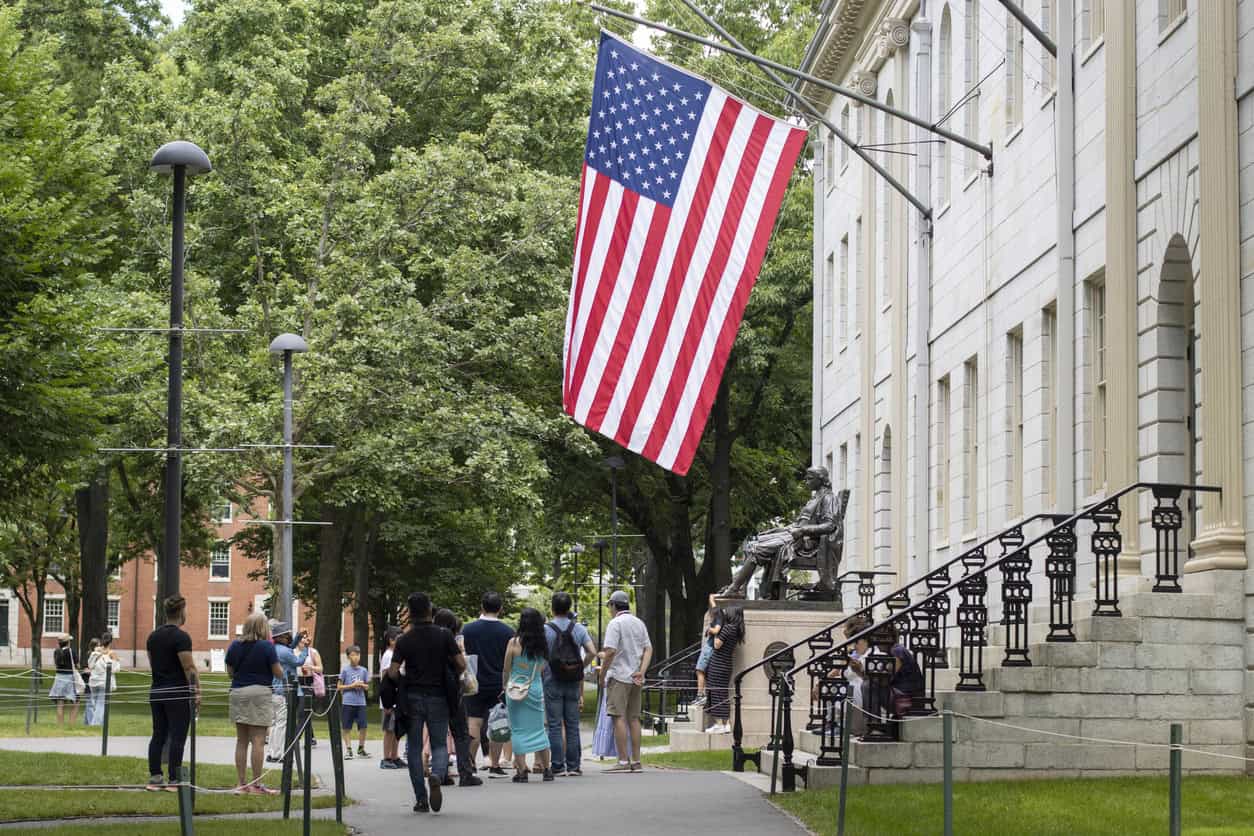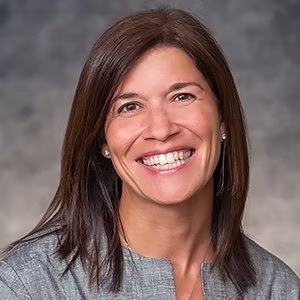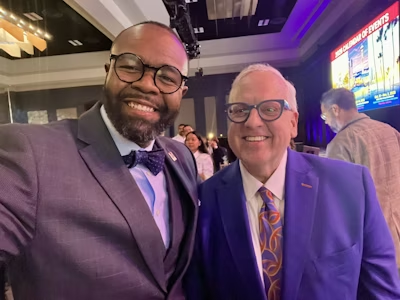I think it’s fair for students to assume that if they end up leaving home to go to university, they’ll be able to rent somewhere to live that is demonstrably safe, reasonably suitable for their needs, affordable, and of a reasonable distance from campus.
I think it’s fair for students to assume that when they are accepted to study away from home at a university, that the university that recruits them will have had at least an eye on whether accommodation that is safe, suitable, affordable and nearby will actually be available.
I also think it’s fair to say that endless surveys, research studies, polls and stories suggest that as the sector has expanded, the reality of the student experience feels like it’s been getting further and further away from that expectation.
2011’s “Students at the Heart of the System” and 2016’s “Success as a Knowledge Economy” were both pretty much silent on student accommodation.
In fact the closest that the last government got to policy on student housing was when 2019’s universities minister Chris Skidmore called a roundtable on the issue, following construction delays that led to hundreds of first year students in temporary accommodation that year:
Poor accommodation, high living costs and a lack of information can seriously affect student welfare and mental health, so providers must be held to account. With the number of students expected to rise sharply due to demographic changes in the 2020s, now is the time to prepare and think ahead about how we deliver and regulate student accommodation for the future. Accommodation is a central issue of the student experience and it is the duty of accommodation providers, HE institutions and Government to think carefully about what needs to happen in the future.
Pro-European Skidmore was relieved of his position by the PM after the general election that followed.
So it was pleasing to find that two of the four factors pick up a mention in the Post-16 Education and Skills white paper:
Accommodation costs have increased significantly. Average student rents across England are now close to the level of the maximum student loan and in London they are above it. There has also been an acute lack of available accommodation in some places. This is more likely to impact on people from low-income backgrounds, influencing their choice of provider or preventing them accessing or completing higher education all together.
Of price and availability, only price gets a data source – the 2024 London iteration of Unipol’s Accommodation Costs Survey 2024, which actually found that in the capital, a student in receipt of the average maintenance loan will need to find an extra £2,890 just to cover the average rent for Purpose-Built Student Accommodation (PBSA).
There’s long been a debate about the extent to which many of the problems are caused by a failure to stimulate supply, or a failure to to control demand – although if Glasgow’s problems in 2022 are anything to go by, it’s tended to be a debate more about buck-passing and blame-pinning than one focussed on generating a solution.
The white paper’s solution concerns itself with the relationship between the two:
We will work with the sector and others so that the supply of student accommodation meets demand, including increasing the supply of affordable accommodation where that is needed. We will work with the sector, drafting a statement of expectations on accommodation which will call upon providers to work strategically with their local authorities to ensure there is adequate accommodation for the individuals they recruit.
Policies requiring work between universities and their “area” don’t have a great history in England – partly because the government and its silos can never make their mind up over who to place duties on, and how to hold them accountable.
Hence in the Higher Education and Research Act 2017, it was universities, via the Office for Students (OfS), that were told to cooperate with one or more electoral registration officers in England to enable the electoral registration of students – only for a 2021 Cabinet Office evaluation of that condition to show that nearly half of all providers (47 per cent) reported that they had had no communications with any local authorities over the issue at all.
As such, on this one the government seems to be pinning its hopes on two policy levers. The first looks like it will be a version of guidance already published by Universities UK in 2011 – a set of “reflective questions” and “case studies” to support university leaders in considering their long-term approach to student accommodation.
The second is the statutory planning framework, which requires that the size, type and tenure of housing needed for different groups in the community should be assessed and reflected in planning policies, with students specifically listed as one of the groups that must be considered.
It got an update in December 2024, removing student accommodation from exceptions to affordable housing policy requirements – part of the government’s broader push to increase affordable housing delivery and ensure that all types of residential development contribute to meeting housing needs.
The question is whether those levers will work – and in an attempt to work that out, I’ve been down a dispiriting rabbit hole of departmental silos, shaky data, poor relationships, and a fundamental failure to get close to matching supply with demand.
Growing demand
Let’s first look at demand. The closest we get to “official” figures on the type of student housing that students are in is the TTACCOM field in the HESA student record. It is to be collected once a year, and differentiates between “provider maintained property”, “parental/guardian home,” “other.” “not known,” “not in attendance at the provider,” “own residence,” “other rented accommodation” and “private-sector halls.”
It is a dataset widely believed to be plagued with quality issues. The once-per-year collection of the thing seems to be carried out at different times – although most seem to do it during September enrolment, when housing may still be in flux. There is also widely believed to be significant confusion amongst students as to which of the boxes to tick, and timing issues may miss postgraduate students depending on their start date.
Nevertheless, other than a census whose data was collected in 2020, and council tax exemption data compiled from Local Authorities, it’s pretty much all we have – and appears in all sorts of reports in the housing sector to justify invitations to invest in “get rich quick” PBSA schemes around the country.
What we don’t know when the sector is expanding is how many students will need a bedspace rather than remain at home, but we can bet that international students will – and we know that the post-2019 changes to the immigration system saw a sharp increase in international students, with international PGT student enrolments in England rising from 265,755 in 2019/20 to 408,240 in 2023/24.
We know that that figure rose much faster than Home Office officials ever envisaged in their assessment of the impact of the changes to the graduate route, which itself never considered accommodation. And neither did the International Education “Strategy” of 2019.
At least for a part of that period, that figure is a major under-estimation, because that circa 150k doesn’t include dependents – most of whom have now been barred from coming. For England it also doesn’t factor in universities in the rest of the UK (mainly Scotland) with campuses in England. And it misses altogether any impacts from the graduate route visa, switching from it to being skilled in the city, or any desire that home students might have to stay in the area and contribute to economic growth.
It doesn’t tell us how many students couldn’t find somewhere safe, affordable, close or suitable in 2019, it doesn’t factor in any reduction of demand for bedspaces from changes to home student habits, and it doesn’t tell us anything about the distribution or concentration of the net increase in demand.
But if we use that 150k figure as a rule of thumb, that’s the equivalent of 63,000 extra “homes” that needed to be built to accommodate the increase – a responsibility that the government places on local authorities at a ratio of 2.4 bedspaces = a home.
2point4 students
Say what? Local authorities have to free up land approve planning requests to hit central government targets on housebuilding, and it turns out that in the Housing Delivery Test measurement rule book, the number of net homes delivered is the the net additional dwellings over a rolling 3 year period, with an adjustment for PBSA calculated by dividing the total number of students living in student only households by the total number of student only households in England.
The current ratio is 2.4 – with source data from the Census 2021, prepared by the Office for National Statistics. The problem is that if the ratio is too high, local authorities receive insufficient credit for student accommodation, discouraging PBSA development and potentially forcing students back into the private rental sector, constraining family housing supply.
Conversely, if the ratio is too low, authorities can meet housing targets by over delivering PBSA relative to general needs housing, creating a loophole that masks underperformance in delivering homes for non-student populations.
The risks are then compounded by two potential flaws – first, the 2.4 figure derives from Census 2021 data collected during pandemic lockdowns when student living arrangements were highly atypical (although ONS assures us that all is fine), and second, applying a single national average ignores substantial geographic variation – students in high-cost cities like London share accommodation at far higher rates than those in cities with abundant PBSA supply.
The other problem is how housing needs are calculated in the first place. Until last December, local authorities calculated housing needs using household projections from 2014 demographic data – a figure that served as both the target for their Local Plans and the benchmark against which actual delivery was measured in the Housing Delivery Test.
The method started with projected household growth over ten years (where students were only implicitly captured as part of demographic trends in household formation, but with no explicit student adjustment), applied an affordability adjustment, and capped increases at 40 per cent for authorities with adopted plans, while adding a controversial 35 per cent “urban uplift” to the 20 largest cities.
That all created a perverse “doom loop” – areas that had historically underdelivered housing saw suppressed household formation in their projections (people couldn’t form independent households and instead shared or stayed in parental homes), which in turn produced lower calculated need figures, perpetuating the cycle of undersupply – meaning councils were both planning for inadequate housing and being measured against those same inadequate targets.
To be fair, to get their Local Plan approved, authorities were required to assess student accommodation needs through direct liaison with universities and could set specific student housing policies.
But when delivery is subsequently measured in the Housing Delivery Test, the denominator is either the adopted plan requirement (which might include explicit student provision) or the minimum standard method figure (where students remained invisible except through household projections) – with the only explicit student adjustment appearing on the delivery side through the 2.4 ratio used to convert completed PBSA bedrooms into dwelling-equivalents. That means councils have to consciously plan for student housing growth but are often measured against targets that fail to capture it.
If anything, the new method is worse. Post-December 2024, it calculates annual need as 0.8 per cent of existing housing stock, adjusted for affordability based on house prices versus workplace earnings. But that excludes students in PBSA, as these don’t count as dwelling stock, and ignores rental affordability pressures specific to students. Since it focuses on homeownership affordability, student housing crises may go undetected unless they influence broader house price trends. And unlike the previous method, it doesn’t account for changes in household formation or rapid student population growth.
Supplying new homes
Nevertheless, whether we’re talking about James Brokenshire or Robert Jenrik’s collective English target of 300,000 new homes a year, or the current government’s revised target of 370,000 homes a year (a target that looks set to be missed), the method for doing so works like this.
Councils are given targets, and duties to consider in their local plans. If the way that students are factored into both need and delivery is faulty, that has the potential to cause real problems in cities – undersupply pushes rents up, and oversupply of PBSA doesn’t help because families can’t flow into buildings designed for students.
When they put together their local plans, councils are told that encouraging more dedicated student accommodation “may provide low cost housing” that “takes pressure off the private rented sector” and “increases the overall housing stock”. In other words, the clear steer is that where there is student numbers growth, it should really all be soaked up by PBSA – and where there isn’t, that PBSA will see students move out of HMOs and flats and into halls.
Is that what has happened? Not quite. Notwithstanding the data quality issues in the HESA stats I reference above, if I just look at those renting (ie those saying they’re in PBSA, university halls or “other rented”) in 2019/20 and 2023/24 (ignoring what we used to call “alternative” providers), we see an increase of 22,915 in private PBSA, a decrease of 5,030 in university halls, and an increase in “other rented” of 93,110.
But not all local authority areas are equal. Again, the fact that this is a bodge tells its own story, but if we were to map each university simplistically to its local authority area, ignore London because of its complexity and do some more bodging where multiple LAs get a joint housing target, the figures look like this:
[Full screen]
Here you can use the drop down to toggle between years, as well as see the overall increase over the five years. Note London is excluded, and all students that HESA shows have been allocated to a single local authority area with a housebuilding target that is nearest to that university’s principal address.
Again that data quality issue and its coverage may be an issue – just because HESA shows a student enrolled with a provider at, say, Teesside University doesn’t mean they’re all living in Middlesbrough given that it has a campus at the Queen Elizabeth Olympic Park in Stratford.
If anything, the above shows how poor the data is – if 150k more international students were knocking around by 2023/24, but the totals outside London only show 50k, either the rest all poured into London, the rest all poured into alternative providers, 100k home students are now not renting, or the “others” and “not knowns” in the HESA data are hiding where students have actually lived.
We can also see the above increases by housing type:
[Full screen]
This time you can use the drop down to toggle between increase over the period by type. As before, note London is excluded, and all students that HESA shows have been allocated to a single local authority area with a housebuilding target that is nearest to that university’s principal address.
Notwithstanding the data issues, the tables make lots of sense. We know about sharp increases in rent in places like Exeter and Bristol, and we’ve heard about oversupply of PBSA issues in places like Coventry and Portsmouth.
What this then allows us to do is look at the relationship between the targets that local authorities were subject to on housebuilding, and the extent to which student numbers increases ate into those targets.
First, here’s local authorities and the impact of students in off-street housing (assuming, as per earlier, that every home = 2.4 students):
[Full screen]
This time you can use the drop down to toggle between that areas’s housebuilding target under the last government, the increase that HESA shows in students renting off-street housing expressed as “homes”, and then the proportion of the target that eats into. As before, note London is excluded, and all students that HESA shows have been allocated to a single local authority area with a housebuilding target that is nearest to that university’s principal address.
Explaining that table becomes a game in itself. Is the Middlesbrough figure something to do with London? Is Hatfield all about students living in Luton or up the M1? But generally we can see where new students in off-street housing have made it even harder for those local authorities to hit their targets.
Now here’s local authorities and the impact of students in both sorts of PBSA (assuming, as per earlier, that every home = 2.4 students):
[Full screen]
Finally, you can use the drop down to toggle between that areas’s housebuilding target under the last government, the increase that HESA shows in students renting university or private PBSA expressed as “homes”, and then the proportion of the target that eats into. As before, note London is excluded, and all students that HESA shows have been allocated to a single local authority area with a housebuilding target that is nearest to that university’s principal address.
In some ways, the LAs above the line represent some good news – PBSA has done some soaking up. The ones to worry about are the ones below the line – because there, the LA will have been counting new beds towards its targets, but once cities right at the bottom tip into over-supply, that stock can’t be redistributed to families.
Add it all up, and it pretty much guarantees a perpetual mismatch between student housing supply and demand, with universities recruiting students faster than the planning system can recognise the need for accommodation, some local authorities green lighting projects only for demand to collapse, and local authorities generally blamed for failures that are baked into the measurement framework itself.
And nowhere is the problem more vivid than the city where I was a student in the 1990s – Bristol.
Time for a cool sharp harp
Back in 1995 when I became a student, I was lucky enough to find an HMO, operated by a retired couple, literally opposite the St Matthias campus of UWE in Fishponds. It had an actual living room, decent sized desks in each room, and rent that was affordable if I indulged in a little part-time work.
On graduation, we moved a bit – first to another property in Fishponds, and then to a flat on Park Street, the hill that runs from the city centre up the University of Bristol where I was based as NUS’ regional officer. I thought I knew the city.
Thirty years on, things are unrecognisable. St Matthias has been closed, most landlords have turned living rooms into extra bedrooms, and a glance at the going rent prices for both PBSA and HMOs suggests I’d have been priced out of university altogether. So acute has the accommodation crisis been in Bristol that, in recent years, both universities have ended up meeting their guarantee of accommodation to new students by housing them in Newport. In Wales.
That has all contributed to a growing sense of crisis in the city – and an eye-watering 9 per cent increase in already sky-high rents in the city between 2021/22 and 2023/24. But to get a sense of what went wrong, and why it will almost certainly continue to go wrong, we need to know what the city has been doing over planning.
The last actual Local Plan for the city is a decade old, notwithstanding some policy bits and bobs since – and a major review has been underway. So as part of the contribution to the intel on local housing need – required to get the new plan passed – in April 2024, council officials drafted a document called “Managing the Development of Purpose-Built Student Accommodation topic paper” with the aim of enabling the delivery of sufficient PBSA to match (all) future growth in student numbers.
It notes that the council’s “Policy H7: Managing the development of purpose-built student accommodation” identified a need for some 8,800 additional student bed spaces city-wide by 2040 – supposedly the total future estimated need for bed spaces over the period 2023 to 2040.
The paper suggests some stilted relationships. The council had “requested” future student number projections and accommodation needs from UWE and UoB, with UWE responding in March 2023 and UoB in August 2023. UWE indicated flat growth to 2030 and could not provide reliable figures beyond that, rejecting projections of significant growth, leading the council to assume no additional bedspace need for UWE.
UoB, on the other hand, provided historic and projected student numbers from 2020 to 2039, identifying consistently 85 per cent of its student headcount as needing accommodation. The increase in students needing accommodation from 2023 to 2039 was therefore calculated at 8,834, rounded to 8,800 bed spaces, forming the total projected need.
Whether there’s a real relationship between UoB’s growth projections and a) its financial projection returns to OfS, b) its access and participation plan, or c) reality is almost moot – but if nothing else it shows the ambition to grow in this particular Russell Group provider.
Scrutiny on the Thekla
When they got the draft plan, the planning inspectors were worried about lots of the assumptions – in the main they queried why UWE demand had been excluded. The council said UWE’s expected growth was largely apprenticeships, short courses and online learning centred on Frenchay in South Gloucestershire, so extra Bristol bedspaces were “unlikely to be significant”.
They also asked about HMOs. The council was using a “sandwiching” rule – the idea that letting a home be boxed in by HMOs on both sides makes local problems worse. Was that the right approach? They asked why “too many HMOs” had been set at ten per cent of nearby homes. And they were confused about where Article 4 Directions – restricting approval for conversation of a house to an HMO – would apply.
The council’s answer was that “sandwiching” ramps up noise, parking and rubbish even when HMO numbers are low. Ten per cent was the point where those harms jumped above the norm. There are seven Article 4 areas across the city – and its map showed where they were.
The University of Bristol also wasn’t thrilled. It argued that the 8,800-bed “need” was unsound because it ignored existing undersupply and growth from UWE and others, and it misaligned base dates so permissions since March 2019 reduced area caps without counting as need. Hard caps on expansion were, they said, too low, inflexible and at odds with the policy’s promise to match student growth with PBSA, and the way those caps were derived – applying an average city-centre density to campuses and growth areas – was methodologically wrong.
It also backed the idea that new-build PBSA beds should be affordable “in principle”, but rejected a blanket affordable-student requirement and the implied role of the university in nominating and managing those beds. The net effect, they warned, was that tighter PBSA supply would push students into the general housing stock, drive rents higher and harm both Bristol’s attractiveness and UoB’s competitiveness.
The proposed affordability rules deserve scrutiny. For the 2024 paper, the council pulled together two things – what students paid, and the money they had. On rents, it looked at 2021 price lists for UoB and UWE halls, big private PBSA providers, and shared houses via Bristol SU Lettings, plus national surveys showing Bristol near the top for student rents in 2021 and 2023.
But on incomes, let’s ignore for a minute that the council doesn’t mention international students at all in the paper (!). It ended up using DfE’s 2021/22 student income survey and the government’s maintenance loan levels, assuming the full maintenance loan was a reasonable minimum income most students can rely on. It then defined an “affordable” student rent as no more than half of that full maintenance loan for the year, noting students don’t pay council tax and PBSA rents usually include bills.
Then to estimate how many would need help, it used Student Loans Company data on the share of students getting the full maintenance loan (household income £25,000 or less) – roughly 23–29 per cent at UoB and 41–51 per cent at UWE in the mid-2010s – and took a punt on a mid-point for Bristol overall – such that Policy H7 would ask for “at least” 35 per cent of beds in new PBSA to be affordable on that definition, with those affordable beds allocated through the relevant university where it runs the building or holds a nominations agreement.
UoB was uneasy about being required to nominate and manage affordable beds – it risked making the university a “de-facto market gatekeeper” – although how anyone else was supposed to make sure cheaper rooms went to poorer students is anyone’s guess.
More fundamentally, UoB’s England-undergraduate “full loan” share fell from 28.3 per cent in 2014/15 to 22.5 per cent in 2017/18, and UWE’s from 51.4 per cent to 40.7 per cent over the same years, with the combined “all students” measure dropping from 26.0 to 18.8 per cent – a slide driven by the frozen £25,000 means-test, not by falling need.
Yet the policy sets no ratchet, no uprating with inflation, no room-type or contract-length nuance, and treats a domestic loan as a universal yardstick. Add that the rent evidence leans on 2021 price lists in a market that has moved quickly, and you end up with a single city-wide floor chosen because it models as “viable,” not because it cleanly maps need. If the proxy undercounts and the benchmark can’t move, that looks less like an affordability regime and more like an administrative comfort zone to get past the inspectors.
Getting in and getting on
This all ought to be an access and participation issue. In its Equality of Opportunity Risk Register (EORR), OfS Risk 11 says that increasing student numbers may limit a student’s access to key elements of their expected higher education experience, disproportionately affecting those without the financial resources or wider support to react appropriately.
Tellingly, even that framing assumes that the “capacity issues” would be caused by more students rather than reduced capacity for a flat number of students – if Bristol hits its targets without commensurate bed space build, UWE would be hit – and both could be hit by Renter’s Rights Act-related HMO reduction. As I’ve noted here before, one of the signature faults of APP regulation is assuming a stable external environment.
OfS warns that those from a low household income, disabled students, mature students, care experienced students and estranged could all be impacted by capacity issues – and in their approved APPs, both Bristol and UWE have targets for students from low household incomes and for disabled students, Bristol has a mature-student target, and while neither set numeric targets for care-experienced or estranged students, the plans still emphasise support schemes.
So you’d assume that OfS – whose own staff must know how expensive renting is in Bristol given most of them are based there – has made sure that both universities have robust Risk 11 intervention strategies over accommodation supply in their plans. You’d assume wrong.
UWE names “suitable accommodation” under OfS Risk 11 but responds via its financial support intervention. And Bristol only mentions Risk 11 in its progression analysis for students declaring a mental health condition, highlighting capacity constraints around access to work experience.
What a mess
Taken together, we have a system that appears to be structurally incapable of delivering what students need. In any city, it feels like there’s little coordination between universities expanding their recruitment and local authorities planning for accommodation, little cooperation between the departments counting students and the ones building homes, and no ability to plan when the data is collected once a year, at different times, and when nobody trusts it anyway.
There’s no ability to forecast when universities won’t (or can’t) share reliable growth projections, when international student numbers can surge by 50 per cent in four years, and when the only response is to assume it away or round it to zero. And there’s no ability to control where demand goes when one institution can decide to grow by 8,800 students while another flatlines, when students can be bussed to Newport to meet a “guarantee,” and when affordability definitions are frozen in time while rents spiral upward.
The frameworks that exist – the planning consultations, the policy requirements, the emerging statements of expectation – are designed for a world where growth (and contraction) is gradual, relationships are strong, and data is reliable. Fundamentally, they’re designed for a world where immigration policy is stable, and student numbers are rationed. That world does not exist.
There’s a lot here that I’ve not touched. The Renters’ Rights Bill will reshape the private rented sector – greater security but potentially fewer landlords willing to let to students at all, particularly in HMO-dense areas where profit margins are already squeezed and local authorities are tightening regulation. For PBSA developers, uncertainty is the enemy of investment. Planning policies that cap bed numbers, impose affordability requirements that shift depending on which inspector is reading the plan, and change the rules mid-pipeline make returns unpredictable. When coupled with volatile international student numbers, the surprise isn’t that some cities see construction slow to a crawl, it’s that anyone builds anything at all.
What does get built increasingly takes the form of gated communities – secure, managed, all-inclusive – that separate students from the cities they study in. The convenience is real, but so is the cost to integration, to understanding how cities work, to building relationships with permanent residents.
That market is itself becoming a mechanism for delayed wealth transfer. Student accommodation has become an infrastructure asset class, with pension funds and institutional investors lending billions against projected rental income streams. Students borrow from government to pay rent to pension funds, while the equity their parents might once have used to help them onto the property ladder is siphoned into maintaining returns for retirees (quite possibly their own parents and grandparents). It’s a social mobility circuit breaker dressed up as an investment opportunity.
And all of this breeds resentment. Locals resent undersupply when it prices them out of rental markets in their own cities, when students with loans can outbid working families for the diminishing stock of affordable homes. They resent oversupply when gleaming PBSA towers stand half-empty, monuments to a growth forecast that didn’t materialise, dark windows looming over neighborhoods crying out for family housing.
Universities that chase international growth find themselves villainised in both scenarios – blamed for swamping local housing markets and for attracting investment that benefits nobody local at all. It shows up in local polling, in council elections, in the fraying of town-gown relationships that were never robust to begin with.
But fundamentally, strip away the policy complications and the investment structures and the local politics, and we’re back to supply and demand. In its latest Student Accommodation Annual Report, property firm Cushman and Wakefield says the quiet part out loud – investors should be “targeting markets with structural undersupply”, because only markets in equilibrium, or temporary undersupply, can sustain meaningful rental growth – and when new beds flood the market, the pendulum quickly swings in the other direction:
Conversely, in cities where PBSA development has subsequently slowed or been constrained, the market has demonstrated its ability to recover. Here, previously delivered stock is gradually absorbed – often through rent rebasing – and pricing power shifts back toward operators. As occupancy strengthens and availability tightens, upward pressure on rents re-emerges.
Another student housing market is possible
Housing shortages are, of course, a major issue across European economies. But it’s notable that most countries, even if they no longer have housing subsidies for students, now have a proper plan. Their student numbers tend to be more stable too – a product partly of funding, partly of regulation, and partly of a dominance of two-year Master’s provision.
See also lower construction costs, less restrictive planning policy, better support for university investment from the European Central Bank and more willingness to contemplate viewing student accommodation as social infrastructure rather than an asset class. You think vice chancellors are paid well? Take a look at the bosses of the big PBSA firms.
The truth is that it simply isn’t possible to switch on and switch off thousands of bedspaces in most UK towns and cities on an annual basis – but without changes to the system, it’s what is somehow expected. Yet more broadly, if that wafer-thin promise in the white paper is to mean anything, it demands a strategy that, like students and their universities, causes the housing they live in to be less expensive. But that feels impossible.
To achieve it, we would need a fundamentally different model of institutional coordination. Universities would need a statutory duty to provide demand forecasts (they do, after all, already do student number forecasts to the Office for Students) – not vague aspirations but binding three-year rolling projections broken down by level, mode and domicile, with meaningful penalties for institutions that blow past their estimates without warning.
Planning authorities would need those forecasts embedded in their development plans as live documents, not static snapshots, with the legal powers and resources to respond when forecasts shift. The Department for Education (DfE) would need to talk to the Ministry of Housing, Communities and Local Government, which would need to talk to the Home Office.
HESA would need to find a way to collect accommodation data that someone actually believes (if the data was used nationally the quality would improve), collected in real-time or at least termly, with standardised definitions and mandatory reporting that can’t be gamed. We’d probably, if we’re honest, need a return of student number controls. At the very least, we’d need a plan more than we need a volatile “market”.
We would need a system that builds for need rather than return. That means genuinely affordable housing – not 50 per cent of a loan that’s already insufficient, but rents tied to evidence of what students from low-income backgrounds can actually pay, with occupancy guarantees or public subsidy filling the gap where the numbers don’t work commercially. We’d need rent controls – like there are in social housing, and like there are in tuition fees.
It means planning policy that mandates additionality – that new PBSA doesn’t just displace students from private renting but actually increases the total stock available, and that it’s built where students will study, not where land is cheap. It means transparency on ownership, on rent-setting, on occupancy rates, so that when gleaming towers stand half-empty we can see who made the decision to build them and on what basis. It means taking solutions like shipping containers – increasingly able to respond to demand peaks and throughs across Europe – much more seriously.
And we would need universities to stop treating accommodation as someone else’s problem. That means ending the guarantees that paper over the cracks by bussing students to Newport or putting them in hotels, and instead treating accommodation availability as a genuine constraint on recruitment – if you can’t house them, you can’t recruit them.
It means universities working with local authorities not because a white paper suggests they should, but because they’re legally required to, with formal accommodation strategies that are consulted on, scrutinised, and published. It means being honest about growth ambitions and their consequences, rather than announcing expansion plans at the same time as telling the planning inspector that future demand will be “unlikely to be significant.”
But we’re not going to get any of that. The political economy is all wrong. Departments protect their silos because coordination means accountability. Universities protect their autonomy because regulation means constraint. Developers build where returns are highest because that’s what their investors demand. Immigration policy lurches from liberalisation to restriction with no thought for the infrastructure consequences because housing eighteen-year-olds (or PGTs from abroad) doesn’t win elections.
Local authorities write policies that look plausible on paper but can’t adapt to reality because the planning system moves at geological pace and nobody wants to be the council that blocked growth or the council that allowed it. And students, who have no vote in the places they study and limited power in the places they’re from, bear the costs of a system that sorts them last.
The white paper’s “statement of expectations” will arrive in due course. It will doubtless “encourage,” “invite,” and “call upon” as these things always do. And in cities where relationships are already strong and growth is gradual, it might even help at the margins. But it won’t fix Bristol, where the forecasts were challenged and the inspector waved them through anyway. It won’t fix the next city to see international recruitment jump 50 per cent in eighteen months.
Until we’re willing to make universities genuinely accountable for the accommodation consequences of their recruitment (see this simple proposal here), to fund the infrastructure that expansion requires, to regulate the market so it delivers need not just return, and to plan properly rather than assume the market will sort it out – students will keep finding that the accommodation that’s available isn’t safe enough, suitable enough, affordable enough, or close enough. And the gap between the promise and the reality will keep on widening.












